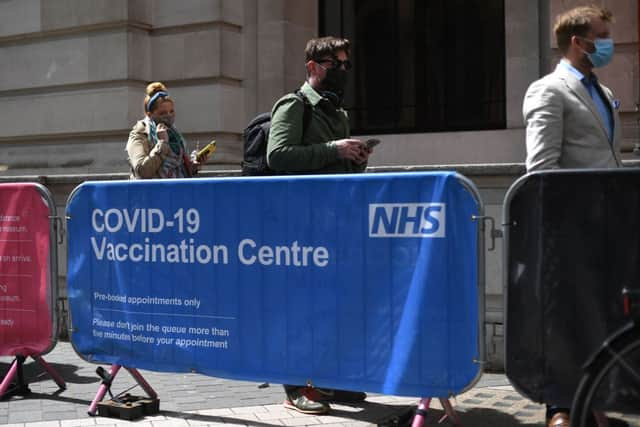Covid-19: which areas in Greater Manchester have seen the biggest case rate rises, and are numbers peaking?
and live on Freeview channel 276
With Covid-19 infection rates remaining high, Manchester World has been taking a look at the most recent official data concerning the novel coronavirus.
Official Government figures show the areas of the city-region which have recently seen the biggest increase in case rates.
Advertisement
Hide AdAdvertisement
Hide AdSome areas have also recently seen their daily case numbers peaking, reaching the highest levels since the pandemic began in March 2020.
We’ve delved into the numbers to see if that is the case in Greater Manchester.
Which areas of Greater Manchester are currently seeing the biggest Covid-19 case rate increases?
The most up-to-date data for neighbourhoods compares the week ending 29 October with the one before it.
The statistics have been analysed by the JPIMedia Data Unit.
Advertisement
Hide AdAdvertisement
Hide AdIn Greater Manchester the biggest rise was the increase of 150.2% observed in the Halliwell and Brownlow Fold area of Bolton.
Cases rose from 93.1 per 100,000 people to 232.9.


Next came Oldham Town North, where there was a 150% rise from 104 cases per 100,000 residents to 260.
Then there was an increase of 142.8% in Patricroft in Salford, where cases went up from 205.9 to 499.9.
In Whitefield West and Park Lane in Bury, there was an increase 128.1%.
Advertisement
Hide AdAdvertisement
Hide AdHowever, the most eye-catching figure was the new case rate for the week up to 29 October, which was a massive 1052.9 per 100,000 residents.
The other neighbourhoods in the Greater Manchester top 10 were Breightmet North in Bolton (an increase of 118.8%), Piccadilly and Ancoats in Manchester (105.9%), Sedgley Park in Bury (103.1%), Leigh Central in Wigan (92.9%), Harpurhey North in Manchester (78.5%) and Failsworth West in Oldham (77.3%).
Are daily case numbers currently peaking in Greater Manchester?
Some areas of the country have been recording their highest daily case numbers at any point since the pandemic started within the past month.
However, with one exception this is not the case in Greater Manchester.
Advertisement
Hide AdAdvertisement
Hide AdTrafford experienced its highest single-day figures on 4 October this year, when there were 351 cases.
Since then, however, numbers have fallen considerably, with 42 cases recorded on 2 November.
In the other nine boroughs the single-day peaks are nowhere near the figures which have most recently been recorded.
The biggest single-day total for 2 November was 80 in Manchester.
Advertisement
Hide AdAdvertisement
Hide AdAnd the lowest peak among the 10 boroughs was 282 in Tameside (with the highest being 931 in Manchester).
Three boroughs - Salford, Stockport and Wigan - experienced their single-day peaks on 15 July this year.
Tameside had its worst single-day case total the day before.
A further four - Bolton, Bury, Oldham and Rochdale - had their day case peaks on 2 November last year.
Advertisement
Hide AdAdvertisement
Hide AdWhile Manchester experienced its highest single-day case total on 30 September 2020.
What is the current picture across England?
The infection level in England has reached its highest ever level, according to the latest data from the Imperial College London-led REACT coronavirus monitoring programme.
The interim results from swab tests taken at home by more than 67,000 people between October 19 and 29 showed that 1 in 58 were testing positive for the disease, or 1.7% of people.
This is the highest number of infections since the study began in May 2020.
Advertisement
Hide AdAdvertisement
Hide AdWhitefield West and Park Lane in Bury was one of 35 neighbourhoods that had an infection rate above 1,000 per 100,000 people in the seven days to 29 October, according to the Government’s coronavirus dashboard.
